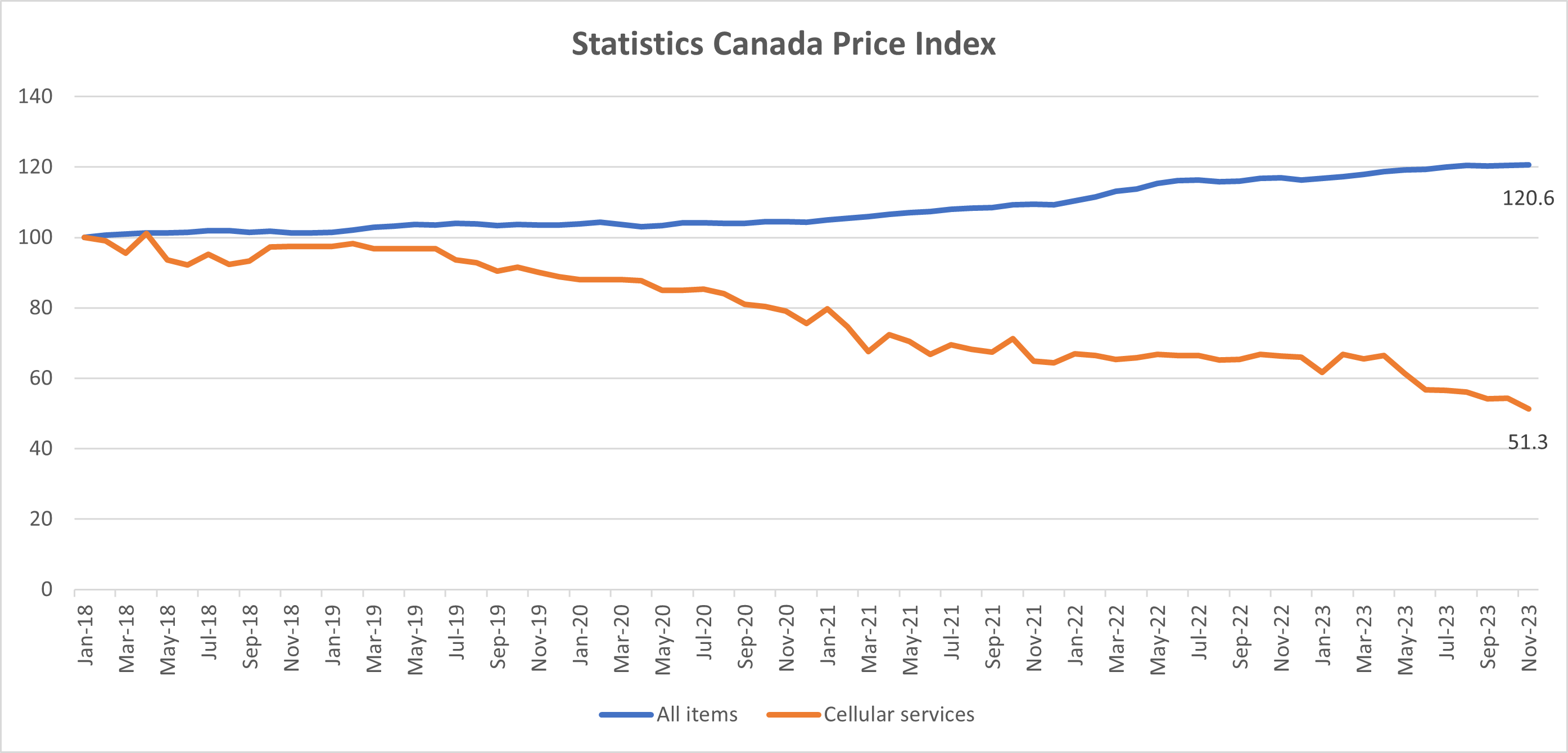Can light touch regulation benefit consumers?
Can light touch regulation benefit consumers? In today’s competitive telecom world, a new paper answers that question, “yes”.
In my 2024 agenda post, I noted how CRTC’s determinations on mandated wholesale access can actually lead to reduced competition by negatively impacting the business case for certain marginal investments. That will lead to reduced coverage for enhanced broadband and advanced wireless services.
CTIA, the US wireless industry association recently released a report that looked at a paper by Georgetown University professor John Mayo: “The Evolution of Consumer Welfare in the Mobile Wireless Service Industry” [pdf, 517 KB]. As CTIA notes, the paper “offers a systematic assessment of the evolution of competition in the wireless industry and how it drives consumer welfare, concluding that the decades of light-touch regulation of mobile broadband provided the framework for substantial gains to consumers.”
… virtually every dimension of economic performance within the wireless telecommunications sector reveals that the light-touch regulatory approach that has governed the industry for decades has created a business-government framework that has generated nothing short of massive gains to consumer welfare in the United States.
…
[The light touch] policy framework has not only produced consumer welfare benefits for today’s customers, but has also resulted in a robust feedback loop in which firms, in competitive efforts to retain existing customers and attract new customers, are driven to constantly invest in next-generation network technologies that produce a steady stream of new innovations. These innovations, in turn, create new consumer welfare benefits for tomorrow’s wireless customers.
The FCC in the US is considering the application of more heavy-handed regulation for its wireline and wireless telecommunications services industries under its Notice of Proposed Rulemaking for reclassifying broadband internet service [pdf, 2.2MB].
In Canada, there seems to be a never ending regulatory process to establish a broadband regulatory framework. Further, the government has sent mixed messages with Policy Directions, and Ministerial letters to the CRTC, challenging regulatory independence. As I wrote last week, the Standing Committee on Industry and Technology plans to “undertake a study on the modernization of the regulatory framework and the convergence of wired and wireless products to ensure that future decisions are informed by robust data and recommendations for the benefit of all consumers in terms of accessibility and affordability”.
What will this mean for the climate for investment in telecommunications infrastructure?
In May of 2021, I wrote about a report that demonstrated that Canadian consumers put a value on quality, and will migrate between service providers based on their mobile network experience.
Consumer welfare isn’t just about price. Will we consider how light touch regulation can bring longer term, more holistic benefits to consumers?
In a post I wrote last October, I asked if we sometimes lose sight of the target. That post referred to a post called “Regulators Regulate”.
Both are worth a fresh look. Should the test for effective regulation be creating an environment that enables and encourages improved consumer welfare?

